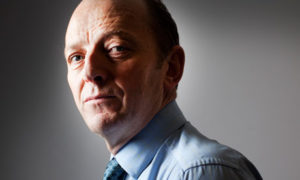Sir Hugh Orde afferma che i proiettili di plastica dovrebbero essere utilizzati solo in situazioni in cui sono messe in pericolo delle vite umane e avverte di rispondere “nelle giuste proporzioni”

Ha affermato: “Non credo sia sensibile in alcun modo utilizzare cannoni ad acqua o proiettili di plastica a Londra. I proiettili di plastica sono un affare serio. Li utilizzerei solamente in situazioni che mettono a rischio delle vite. Ciò che sta avvenendo a Londra non è un’insurrezione che sta facendo cadere il Paese. Ci sono 8 milioni di persone a Londra e solo una minima parte sta facendo tutto questo. Sono bande di sciacalli e criminali e sebbene sia preoccupante, va tenuto nelle giuste proporzioni”.
Proiettili di gomma e poi di plastica sono stati utilizzati in Irlanda del Nord fin dal 1969 e vengono impiegati ancora oggi. Conosciuti per essere proiettili a ridotta energia, i proiettili di plastica sono lunghi circa 15 centimetri. Diversamente dai proiettili di gomma che vengono sparati prima verso il terreno per colpire di rimbalzo, i proiettili di plastica vengono sparati direttamente verso le persone durante i disordini.
La polizia dovrebbe sparare al di sotto della cintura ma 17 persone, di cui 8 bambini, sono stati uccisi da questi micidiali proiettili. Molte delle vittime furono colpite alla testa o al petto.
La prima vittima fu l’ndicenne Francis Rowntree, uccisa da un proiettile di gomma sparato dall’esercito britannico il 22 aprile 1972 ai Divis Flats di West Belfast. L’ultimo a morire è stato Seamus Duffy, 15 anni, colpito da un agente della Royal Ulster Constabulary mentre camminava nel quartiere di New Lodge, North Belfast, il 9 agosto 1989.
I proiettili di plastica vengono sparati da apposite armi utilizzate solo da specialisti. Gli agenti impiegati nel loro impiego furono dislocati diverse volte in Inghilterra, ad esempio a Broadwater Farm nel 1985 e al carnevale di Notting Hill, ma mentre sono stati utilizzati regolarmente in Irlanda del Nord, non hanno mai sparato in Inghilterra, Galles o Scozia.
Tratto da Utv
Top police officer warns against use of plastic bullets on rioters
Sir Hugh Orde says baton rounds should be reserved for life- threatening situations and urges response ‘be kept in proportion’
He said: “I do not think it would be sensible in any way shape or form to deploy water cannon or baton rounds in London. Baton rounds are very serious bits of equipment. I would only deploy them in life-threatening situations. What is happening in London is not an insurgency that is going to topple the country. There are 8 million people in London and it is a tiny proportion doing this. They are gangs of looters and criminals and although it is concerning it has to be kept in proportion.”
Rubber and then plastic bullets have been deployed in Northern Ireland since 1969 and are still used today. Known as attenuated energy projectiles, plastic bullets are about 6 inches long. Unlike rubber bullets which are fired into the ground first, plastic bullets are fired directly at someone in a riot situation.
The police are supposed to fire at the individual’s legs but 17 individuals, eight of them children, have been killed since 1969 with rubber and latterly plastic bullets. Many of those killed were hit in the head or chest.
The first of these victims was 11-year old Francis Rowntree who was fatally wounded by a British Army rubber bullet on 22 April 1972 at the republican Divis Flats complex in west Belfast. The last person to die in similar circumstances was Seamus Duffy, 15, who was shot by a Royal Ulster Constabulary officer with a plastic bullet while walking in the republican New Lodge district in north Belfast on 9 August 1989.
The teenager’s death provoked days of rioting across republican areas of the city and his funeral later degenerated into a unseemly spectacle when a German news photographer manhandled and upset mourners during the procession from the boy’s home to the cemetery.
Plastic bullets are fired from baton rounds which in London are only used by specialist C019 firearms officers. Officers carrying baton rounds have been on standby before in England, including at Broadwater Farm in 1985 and at the Notting Hill carnival, but while they have been used regularly in Northern Ireland they have never been fired in England, Wales or Scotland.